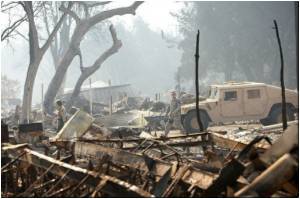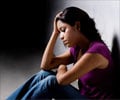
The potential for lasting trauma is compounded by the unusual multiple nature of the event: a massive 9.0 earthquake, a devastating tsunami and a nationwide scare over a possible meltdown at a nuclear plant.
Experts say the scale of the loss and disruption for some children would have been almost inconceivable: homes destroyed, friends disappeared, one or both parents maybe killed, or siblings and other close family members missing.
Initial efforts to help them come to terms with the tragedy can only be made in extremely stressful circumstances, with families packed into ill-equipped evacuation shelters, suffering bitterly cold nights and frequent terrifying aftershocks.
"We found children in desperate conditions, huddling around kerosene lamps and wrapped in blankets," said Save the Children spokesman Ian Woolverton, who visited a number of evacuation centres in the coastal regions of northeast Japan that bore the brunt of the March 11 tsunami.
"They told me about their anxieties, especially their fears about radiation," Woolverton said, adding that several youngsters had mentioned the atomic attacks on Hiroshima and Nagasaki, which they know from school books.
Advertisement
Atsushi Takahashi, 36, said his two-year-old son Haruto has been terrified by the constant, sometimes powerful aftershocks.
Advertisement
"I always tell him that everything is okay and I hug him," Takahashi said. "I think we just have to let time heal the wounds."
Many children have had trouble sleeping, woken repeatedly in the night by bad dreams, while others have mentally shut down, shunning any company but their parents, whom they refuse to let out of their sight for even a moment.
Woolverton said the priority for his group was to set up "child-friendly spaces" where children of a similar age could interact and start to play together again.
"I know from years of experience that if children play, it can ward off the chance of major long-term emotional trauma," he said.
"The idea is also to relieve the stress on parents and to give them a break from childcare duties as they register for emergency assistance, try to find food, locate friends and family members and, in the longer term, jobs and housing."
Grandparents have tried their own form of therapy, telling children stories of the difficulties they faced in their own childhood during and after World War II, and how they managed to overcome them.
"We have to live at whatever cost," said Shigenori Kikuta, 72.
"We have to tell our young people to remember this and pass on our story to future generations, for when they become parents themselves," he said.
The middle of his three grandsons had, Kikuta said, been "really shaken up" having fled to higher ground and safety only to watch the tsunami obliterate the town of Kesennuma, where he lived.
But if the disaster underlined the vulnerability of young children, it also highlighted their often extraordinary resilience.
Keiko Kudo, 36, said she had managed to explain "to a certain extent" to her eight-year-old daughter what had happened.
"It's been difficult, but she has been well overall," Kudo said.
Inside a classroom of Kesennuma Elementary School, where some 400 people have been sheltered, 10-year-old Shotaro Koizumi watched over his six-year-old sister Haruna, while their father worked with other adults to run errands and exchange information.
Haruna said she was looking forward to starting first grade in April, but was disappointed that her new bag and school clothes had been lost in the tsunami.
Haruna was at daycare and Shotaro at school when the quake hit.
"I was worried about my family. My sister is very young, you see," Shotaro said. "When I saw them, I was so happy."
Source-AFP








